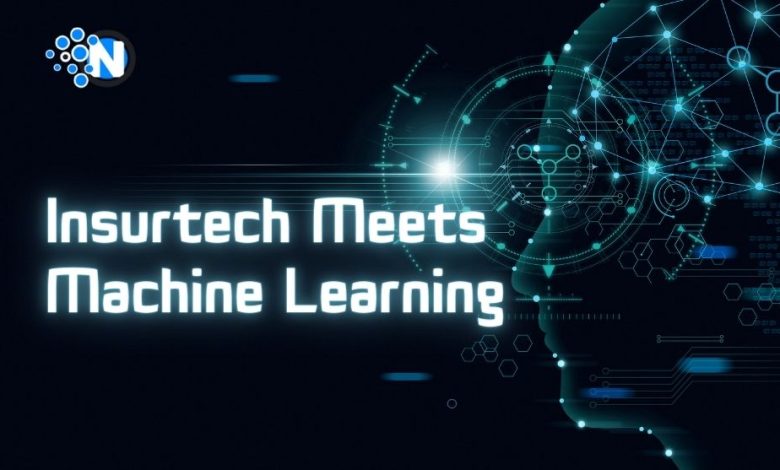Insurtech Meets Machine Learning: How Do the Two Superpowers Complement Each Other?

The Insurtech word emerged sometime in the early 2010s to address multiple types of software solutions used by industry practitioners.
Data analytics platforms providing risk assessment assistance to agents, telematics systems collecting data for UBI, or blockchain-based smart contracts facilitating transparent claims processing; they are all about Insurtech.
Nowadays, we observe their merger, the idea of using the Insurtech tools together with machine learning (ML), a set of technologies and technological approaches that enable software engineers to develop algorithms replicating human rationality and decision-making.
As one of the subfields of artificial intelligence (AI), machine learning entails training algorithms on different types of data either in a supervised, semi-supervised or unsupervised approach. Based on these patterns in the data, ML models can identify objects, discover trends, offer intelligent suggestions among others.
In this article, we will disucss how machine learning gives Insurtech solutions a competitive edge, transforming insurance software development as we know it.
Types of Machine Learning Techniques Used in Insurtech
Before we dive into practical ML applications in Insurtech, let’s zoom in on the different types of machine learning used in the sector:
- Supervised learning, where algorithms learn from labeled training data. In this approach, an algorithm receives a set of inputs along with the corresponding right outputs and learns by comparing its actual output with the correct outputs to find errors. In insurance, the primary use cases for supervised learning include assessing the risk levels of particular clients based on historical data, spotting fraudulent activities, segmenting customers, and anticipating their lifetime value.
- Unsupervised learning meaning algorithms consume data but do not receive explicit instruction on what to do with it. Unsupervised algorithms use clustering and other methods for identifying structure and patterns in training data. Some uses of unsupervised learning in the insurance industry include segregating customers by demographic, claims history, and policy type. Other powerful examples include market basket analysis to predict what products the customer is likely to buy identify evolving threats, and for unstructured textual data such as emails, customer reviews phone call transcripts.
- Semi-supervised learning, which uses labelled and unlabelled data for algorithm training. The approach is effective particularly for cases where there’s a lot of unlabeled and unstructured data in an organization irrelevant the lack of time, qualified personnel to labeling. By using small portions of labeled data to guide the algorithms, ML engineers can detect new types of insurance fraud, create more accurate risk assessment models combining historical and current customer data, and pinpoint anomalies in operational data, such as extended claim handling and underwriting times.
- Reinforcement learning, where human engineers reward or punish algorithms to fine-tune their cognitive abilities. Unlike supervised and unsupervised machine learning algorithms, reinforcement learning solutions do not use labeled or unlabeled data in the traditional sense. Instead, algorithms interact with an environment and achieve a specific goal through trial and error. In Insurtech software, reinforcement learning can be a game-changer for recommending personalized products and coverage options based on past interactions with customers, dynamically adjusting an agency’s pricing strategies, suggesting more effective approaches for claims handling, and improving customer support chatbots’ business logic.
- Deep learning, where algorithm design and learning methods are inspired by the structure and function of a human brain. Made up of input, output, and numerous hidden layers, deep learning algorithms can assess data based on a larger number of parameters and, subsequently, make more complex decisions with little to no involvement from human specialists. By integrating deep learning capabilities into Insurtech solutions, software engineers can enhance or fully automate such tasks as fraud detection, risk evaluation, document processing, property image analysis, and customer service.

Key ML Applications in Insurance Technology
Based on the information provided above, we could classify all ML-based Insurtech solutions into two groups:
- Data analytics solutions
- Process automation solutions
The former category spans historical and real-time data analytics systems, which, unlike traditional business intelligence (BI) and rule-based systems, excel in unstructured data processing. Given that 80% of all enterprise data is unstructured, ML can thus be a breakthrough technology for the document-intensive insurance sector.
The latter category includes conversational agents populating mobile apps, websites, and customer support portals, as well as ML-augmented robotic process automation (RPA) tools. Chatbots, powered by machine learning algorithms, can take over the majority of routine client interactions. Unsurprisingly, the insurance chatbot market is on track to become a $4.5 billion industry by 2032, growing at a CAGR of 25.6%. Meanwhile, RPA tools with machine learning capabilities do not merely source and copypaste information on the interface level; instead, they act as intelligent advisors to insurance professionals and even function independently, saving employees’ time for higher-value work.
Why Use Machine Learning in Insurtech?
Besides improved operational efficiency and cost reductions, there are several factors driving ML adoption in insurance technology:
- Data deluge. The amount of data generated by digital enterprises is growing at unprecedented speeds—to be exact, by 63–100% monthly. To make sound business decisions, a modern company now taps into at least 400 internal and external data sources. It is practically impossible to process this information manually or structure it for rule-based analysis. Machine learning, specifically its unsupervised variation, comes as a viable solution to the data deluge problem.
- Insurance employee shortages. In the next few years, up to 400,000 employees will retire from the US insurance sector, leaving an enormous workforce gap. Younger employees, meanwhile, often lack the necessary competence and motivation to bridge it. Specifically, the industry is on the hunt for data analysts, with 50% of insurance companies naming the skill as the key factor influencing their hiring decisions. By entrusting a larger portion of data processing operations to intelligent algorithms, insurance firms can potentially reduce their employee count while delivering the same level of service to customers, whose demands and expectations evolve with greater technology adoption.
Conclusion
On a side note, leading-edge artificial intelligence solutions like generative AI and augmented analytics take the complexity out of the data analytics processes, empowering non-technical employees to gain better, deeper insights from operational data.
If anything, these factors prove Insurtech is ripe for at-scale machine learning implementation. However, companies should not jump on the ML bandwagon blindly; the decision to enhance existing software tools with machine learning should be preceded by a thorough evaluation of a company’s analytics and automation needs.




